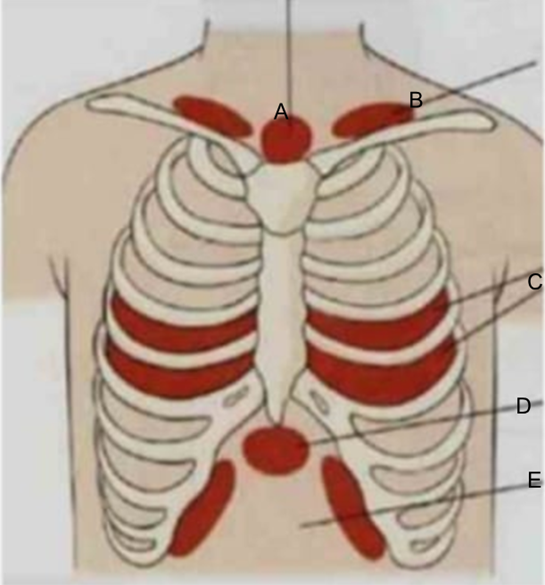NURS_533-01_SU25 Pediatric Final Proctored Exam
Total Questions : 62
Showing 10 questions, Sign in for moreThe nurse is caring for a child admitted with head trauma after falling off of a swing. Which early assessment finding would alert the nurse to possible increased ICP in the child?
Which is the most developmentally appropriate intervention when working with the hospitalized adolescent?
A HIV+ mother is presenting to the primary care office with her newborn. She wants more information about breastfeeding her child, which of the following responses from the nurse BEST answers the mother's question?
A child with diabetes reports that he is feeling a little shaky. Further assessment reveals that the child is coherent but with some slight tremors and sweating. A fingerstick blood glucose level is 70 mg/dL. What would the nurse do next?
The nurse is presenting an information session on birth defect prevention. What supplement should be recommended to decrease the incidence of neural tube defects?
The nurse is caring for a child in respiratory distress who is experiencing substernal retractions. Select the red area where SUBSTERNAL retractions occur.

The nurse on the pediatric floor is taking care of a patient just diagnosed with Kawasaki Disease. On exam, the nurse can expect to find this hallmark clinical finding
Explanation
Rationale for Correct Choices:
• Cracked lips and strawberry tongue are hallmark mucocutaneous changes in Kawasaki disease, reflecting widespread inflammation of mucous membranes in the acute phase. These are often accompanied by conjunctival injection and rash.
• Aspirin and IV gamma globulin are the mainstay treatments for Kawasaki disease, reducing inflammation and significantly lowering the risk of coronary artery aneurysms when given early in the illness.
Rationale for Incorrect Choices:
• Petechiae and purpura rash are more commonly seen in platelet or clotting disorders such as idiopathic thrombocytopenic purpura or meningococcemia. Kawasaki disease typically presents with diffuse erythematous rash, not pinpoint hemorrhages.
• Polyarthritis may occur in the later stages of Kawasaki disease, but chorea is a neurological manifestation linked to rheumatic fever. This combination does not fit the acute presentation of Kawasaki disease.
• Corticosteroids and antibiotics are not first-line treatments for Kawasaki disease. Antibiotics are ineffective as the cause is not bacterial, and corticosteroids are generally reserved for IVIG-resistant cases.
• ACE inhibitors and NSAIDs are not standard therapy for Kawasaki disease. ACE inhibitors are used in hypertension or heart failure, and NSAIDs are not as effective as high-dose aspirin in reducing the acute inflammatory response in this condition.
During a routine well child visit, the parent of a 10-year-old child tells the nurse. "My child doesn't want my help with anything anymore." What is the best response from the nurse?
Classify the following congenital cardiac defects as cyanotic defects or cyanotic defects.
Explanation
Rationale:
• Hypoplastic Left Heart Syndrome is cyanotic because severe underdevelopment of the left heart structures leads to mixing of oxygenated and deoxygenated blood, causing systemic hypoxemia from birth.
• Transposition of the Great Arteries is cyanotic as the aorta and pulmonary artery are switched, creating two separate circulations where oxygenated blood does not reach the systemic circulation without a shunt.
• Atrial Septal Defect is acyanotic because it initially causes a left-to-right shunt, increasing pulmonary blood flow without significant desaturation until later complications develop.
• Coarctation of the Aorta is acyanotic since it involves narrowing of the aorta, leading to obstruction of blood flow rather than abnormal mixing, so oxygen saturation typically remains normal.
• Patent Ductus Arteriosus is acyanotic in early stages because blood flows from the higher-pressure aorta into the pulmonary artery, increasing pulmonary circulation without systemic desaturation.
• Tetralogy of Fallot is cyanotic due to the combination of four defects, including right ventricular outflow obstruction, which forces deoxygenated blood into the systemic circulation.
You are calculating the intake for a 10 month old infant for the past 4 hours. She is on a clear liquid diet in the past 4 hours she has taken 6.5 ounces of water from a sippy cup. She also ate an entire 2 ounce Pedialyte ice pop and 1/4 cup of jello. Her maintenance IV fluids are running at a rate of 18 ml/hr. She received a dose of Ceftriaxone 400mg/50ml via IV piggyback two hours ago. What is the total intake for this patient in the past 4 hours. Please put your answer in MILLILITERS and round to the nearest WHOLE number.
Explanation
Calculation:
- Identify all fluid sources and convert volumes to milliliters (mL).
Water intake: 6.5 ounces x 30 mL/ounce = 195 mL.
Pedialyte ice pop intake: 2 ounces x 30 mL/ounce = 60 mL.
Jello intake: 1/4 cup x 240 mL/cup = 60 mL.
Maintenance IV fluids: 18 mL/hour x 4 hours = 72 mL.
Ceftriaxone IV piggyback: The entire volume of the bag is counted, which is 50 mL.
- Add all the volumes together to find the total intake.
Total intake = 195 mL + 60 mL + 60 mL + 72 mL + 50 mL
= 437 mL.
Sign Up or Login to view all the 62 Questions on this Exam
Join over 100,000+ nursing students using Naxlex’s science-backend flashcards, practice tests and expert solutions to improve their grades and reach their goals.
Sign Up Now


